'A great carpet can do wonders for a space' – these 10 carpet ideas will help inspire you to create warmth, texture, and style underfoot
Cozy, stylish, and surprisingly versatile – explore the most stylish carpet ideas for living rooms, bedrooms, and beyond

- 1. Consider all the materials on offer
- 2. Choose the pile type for both form and function
- 3. Select a neutral palette that blends into the background
- 4. Or dial up the drama with bold color
- 5. Go for luxury in the bedroom
- 6. Create an organic look with textured carpet
- 7. Be bold with pattern
- 8. Layer up with a statement rug
- 9. Be divisive with carpet in unnatural spaces
- 10. Choose a chic stair runner

Charlotte Olby
A well-chosen carpet has the power to completely transform a space, adding warmth, texture, and personality underfoot. From bold statement styles to soft, neutrals, today’s carpet ideas go far beyond the purely practical.
Whether chosen for comfort, color, or to elevate a room’s design scheme, carpets are a flooring idea that offers the perfect balance of function and style in both modern and classic interiors. As Claire Kimble, head of design at Crucial Trading, puts it: 'the floor can become a canvas that can be ever-changing, reflect a mood, and bring comfort and direction to our interior.'
Of course, choosing the perfect carpet involves more than just color or pattern. There are important details to consider, from materials to pile types. So, whether you are carpeting the whole house or just the one room, we have curated a collection of beautiful carpeted looks, along with some valuable carpet advice from the experts, to help with the carpet ideas in your home.
10 carpet ideas to know before you buy

There is a lot to consider when choosing the right carpet for your home, such as the cost to install carpet, the underlay and material to low pile and high pile – and of course, don't forget the color and carpet mistakes to avoid.
Rupert Anton of The Carpet Foundation shares his top tips for when exploring carpet ideas in the home. 'When buying carpet for your home, things to consider include: the room it is for, your color scheme, the purpose of the carpet/desired lifespan, and your budget – not forgetting including costs of fitting and underlay.'
'Also remember, measuring the room – leave it to an expert! Ordering samples of carpet to see designs in situ, underlay, and the fitting of your carpet,' he adds.
With the right approach and armed with all the inspiration, carpet can become one of the most impactful design elements in any home.
Design expertise in your inbox – from inspiring decorating ideas and beautiful celebrity homes to practical gardening advice and shopping round-ups.
1. Consider all the materials on offer
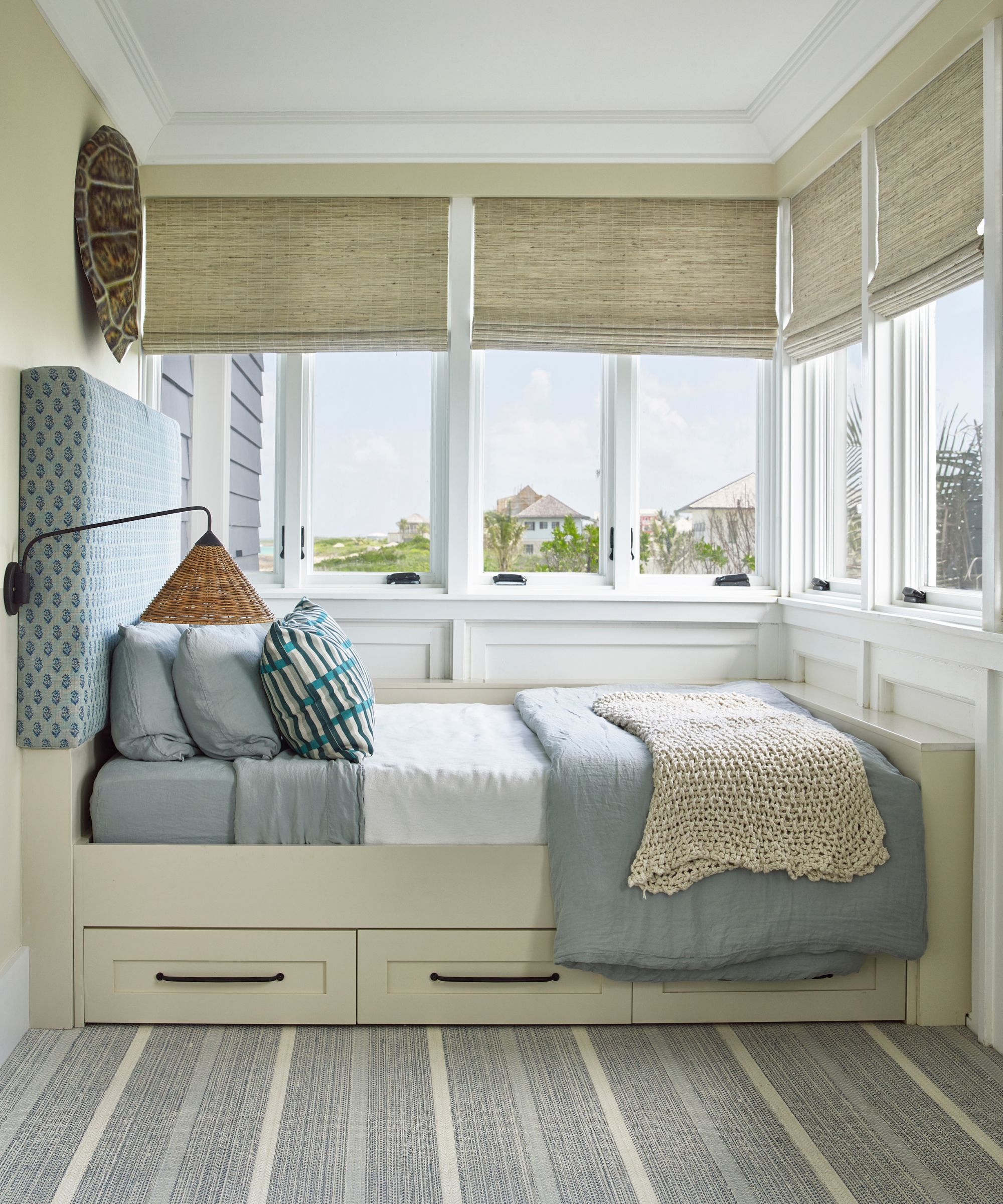
When you first start looking into carpet, the materials on the market can be a rather daunting read. Wool, sisal, jute, seagrass, and synthetic blends – each one brings something totally different in terms of texture, performance, and importantly, aesthetics.
Natural fibers like wool still remain one of the most popular choices for a reason. 'Wool carpets are set to maintain their popularity in 2025. Renowned for their durability, practicality, and natural insulation, these carpets offer elegant style while remaining an environmentally friendly option,' says Alexandra Ellis, Marketing Manager at Cormar Carpets.
Alternatively, something made from fibers extracted from plants, like a sisal carpet, can establish a timeless, organic look that brings the beauty and versatility of the outside world indoors.
Julian Downes, managing director at Fibre Flooring, explains: 'Sisal is a natural, plant-based material which offers a range of patterns which can not only add texture, but also allow you to use the design to make the most of available space. For example, herringbone and stripes add direction and make a space look longer as it draws the eye down through the room or along a corridor or stairs.'
2. Choose the pile type for both form and function
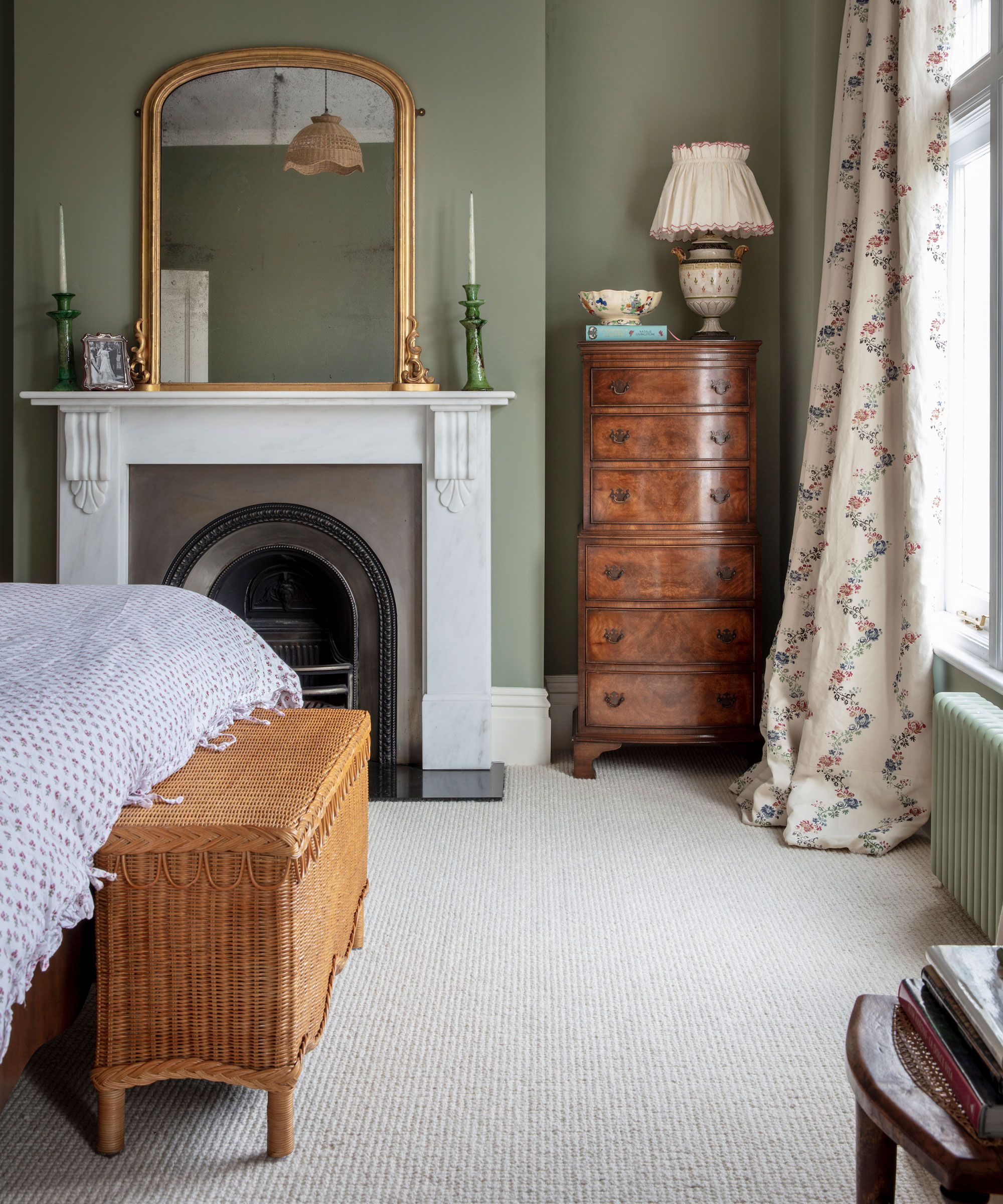
The surface pile texture can make a huge difference to the look and wear of the carpet and is categorized as below:
- Twist pile carpets have tightly twisted yarns to give a hardwearing carpet with a crisp feel; these are less likely to show footprints and wear and tear.
- Velvet carpets have a dense, low-cut pile, where individual tufts are hardly visible. The density gives a rich, smooth effect, though it tends to show footprints.
- Loop piles are also popular, and many are woven to look like natural floorings such as sisal. A mixture of high and low loops or cut and loop pile tufts within the same carpet is sometimes used to create a pattern. A good choice for a light-toned carpet, they won’t show indentations from footprints. Most loop piles suit heavy domestic use.
- Flatweave carpets are similar to loop piles, but have a flatter, smoother surface. These work well for runners and stair carpets.
- Saxony carpets have a long pile making them luxurious underfoot while shag pile carpets have even longer tufts. Both are excellent for use in bedrooms and living rooms.
For a formal space like a bedroom or a lounge, velvet or Saxony offers a plush, almost hotel-like feel underfoot. These give a sense of softness and comfort, but they do show footprints and vacuum lines more easily, so that is something to be aware of.
Loop pile carpets, on the other hand, offer a more casual, textured look and are ideal for busy areas like hallways and stairs. Berber styles, where loops are tightly packed and often flecked with color, are especially good at disguising wear and tear as the structure of a loop pile makes it more resistant to crushing and indentations.
Of course, each type has its pros and cons, but once you understand the main traits of each, it becomes easier to match the right carpet to the right room.
3. Select a neutral palette that blends into the background

From soft greys to warm taupes, stony creams, and natural beige tones, the right neutral carpet can add subtle depth and texture without overwhelming the space, and it works beautifully for bedroom carpet ideas, living room carpet ideas, and staircase carpets alike.
Although the vast majority of us are still opting for neutral carpet, subtle changes are seeping in. The traditional gold and beige tones are being replaced by greys, taupes, and stone shades, while strong color is being used now in the same way as wallpaper, to create an accent.
Jodie Hatton, Design Manager at Brintons, says: 'Earth-inspired warmth dominates the 2025 palette, with a sophisticated array of tones taking center stage. Think rich beige foundations layered with burnt orange sunsets, aged terracotta, wine-deep reds, and sumptuous chocolate browns. These versatile warm-toned neutrals create an instant atmosphere of welcome and comfort.'
4. Or dial up the drama with bold color
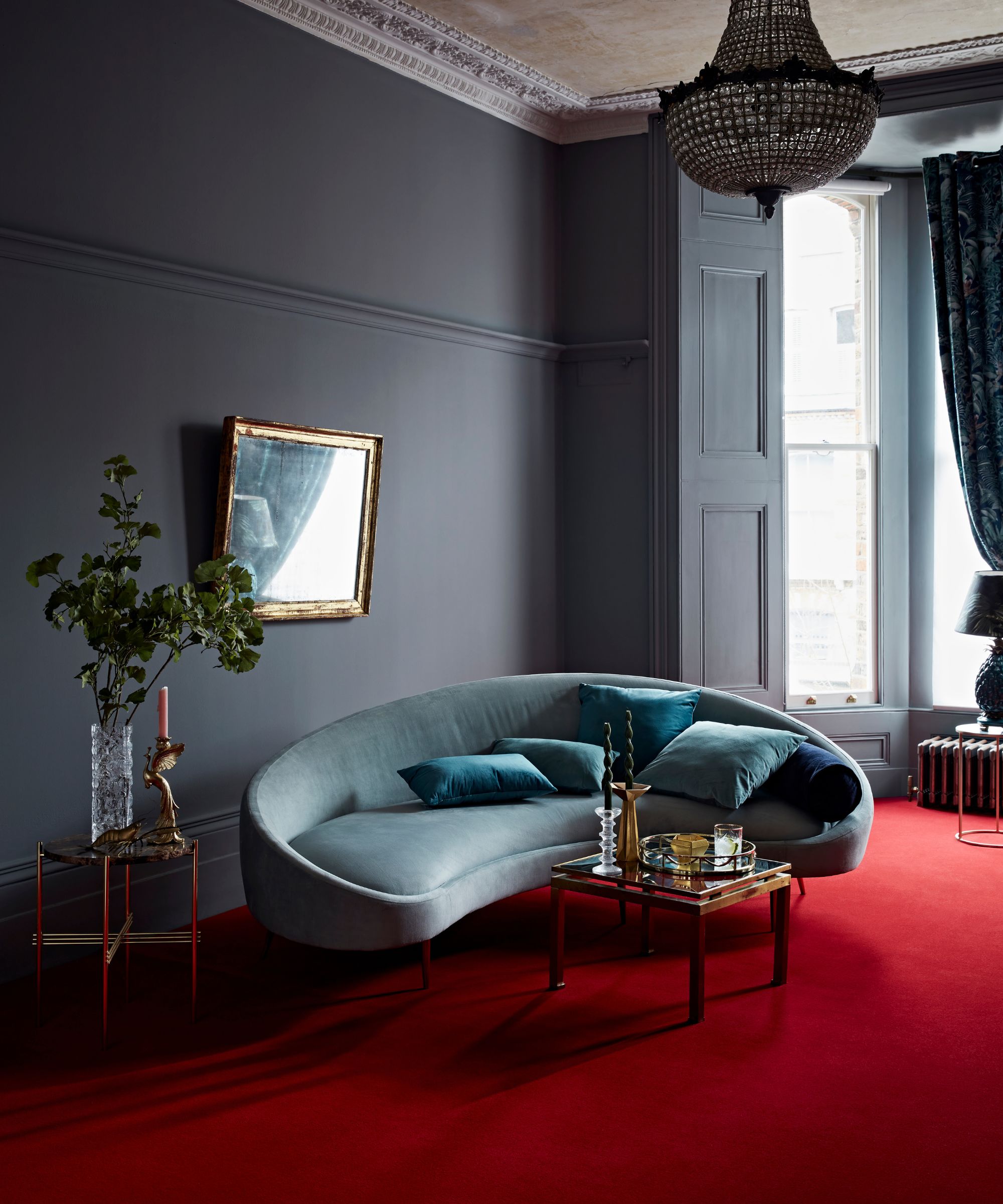
On the flip side, colorful carpet is having a moment. While you might love the calming effect of neutrals, it's worth considering how vibrant carpets can completely transform the energy of a space.
And it turns out, it’s a brilliant way to inject personality into your home. Jodie says: 'More than just a design choice, these bold colors reflect our collective desire for spaces that radiate personality and spark joy. 2025 sees a gentle shift in carpet trends towards introducing bold colors – think flashes of rich red, jade green, cobalt blue, and warming mustard yellow, creating floors that command attention.'
Mike Richardson, general manager of Kersaint Cobb adds, 'For the really bold, try experimenting with color with a vibrant carpet for a real style statement. Think about making the carpet the base of your design scheme, compliment the colorful flooring with a more neutral palette for furniture and accessories to create a modern look.’
Of course, colorful carpet does come with a few extra considerations. It’s best to commit to it in rooms where you won’t want to redecorate frequently, or where other finishes are more pared-back. If you’ve always played it safe with flooring, a bold carpet might just be the design risk that pays off.
5. Go for luxury in the bedroom
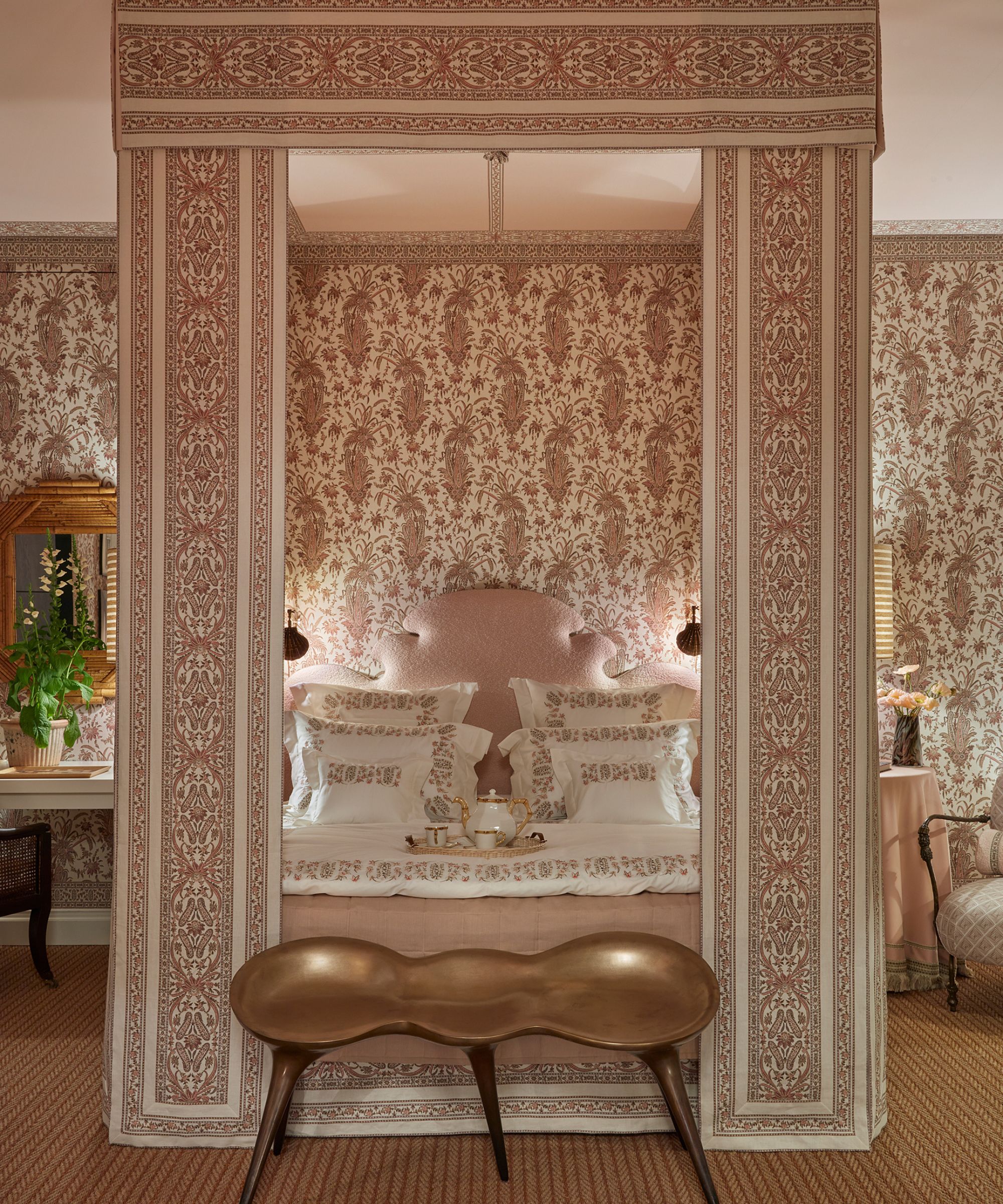
When it comes to choosing carpet for your spaces, like the bedroom, where you want to prioritize coziness, you want to pick the softest materials available and look for plush pile types that make the room feel cocooning and calming.
'When it comes to bedroom carpet, think luxury high pile that is irresistibly plush, on-trend, and effortlessly elevates any space with a sense of warmth and sophistication,' adds Alexis Vitale, Vitale Design Group. 'Combining luxurious textures with dramatic patterns or solid hues elevates interiors with a sense of glamour, depth, and sophistication. It's ideal for upscale spaces and blends artistic expression with high-end design to make a strong impact.'
Wool is the preferred option for a bedroom or living room carpet, not only because it’s a natural fiber but also because of its hardwearing qualities and natural springiness, which make it resistant to being compressed by furniture and footsteps. It’s also warm and soft with a luxurious, unmatched feel.
6. Create an organic look with textured carpet

There's something incredibly calming about textured flooring that mimics or is made from plant fibers like woven sisal, jute, or seagrass. These warm materials instantly create that organic, lived-in look that feels both stylish and relaxed.
Natural floorings are a versatile option, and can be fitted as standard wall-to-wall carpet or make great rugs or runners with bound or decorative trims and edging. It is worth noting that plant-fiber flooring doesn’t cope well with water, so it isn’t the right choice for a kitchen or bathroom or for busy households with pets or children, but you can ask for it to be pre-treated with a stain inhibitor.
And it is a look loved by designers that helps to add dimension and warmth, thanks to the richer natural tones, in a way that feels contemporary yet still works for traditional spaces. 'The natural trend isn’t just for colors – it is also with materials,' says Rupert, who says alongside materials like sisal, you can also look to natural wools. 'You can’t get much more natural or sustainable than wool! It has numerous inherent benefits – its resilience, ability to ‘bounce back’ from compression, comfort, the fact that it is flame resistant, absorbs noise, and provides insulation.'
7. Be bold with pattern
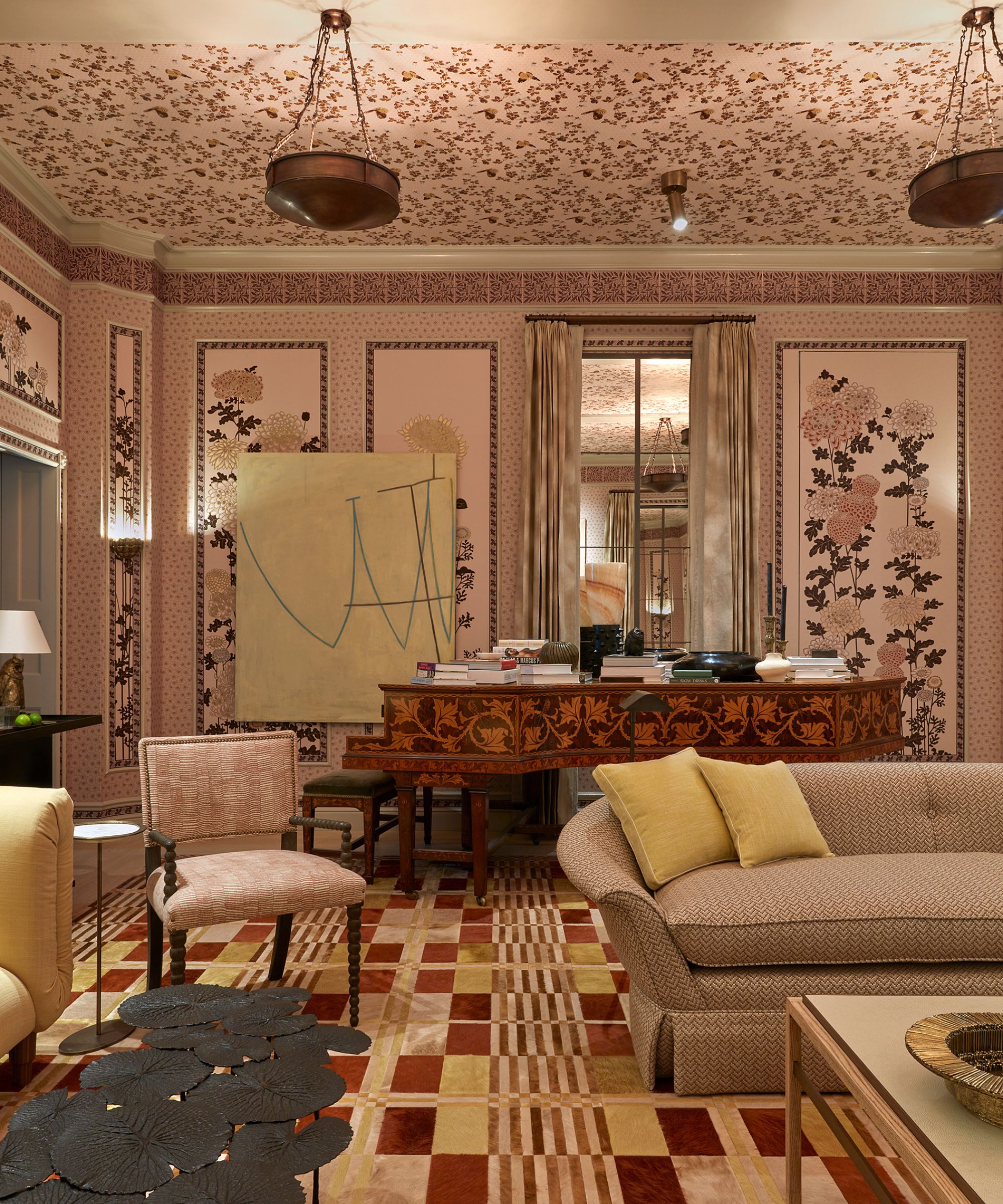
With today’s chic designs, patterned carpet can bring such a fresh, stylish edge to a room – and it doesn't have to feel like a dated hotel or your Grandma's living room.
The latest living room trends suggest that stripes are in – and are now available in several brave colorways – perfect for stairs and small living rooms. The master of stripes Roger Oates champions the versatility of stripes. ‘You can be bold with widths and colors to create drama, or use fine lines for a more classic or subtle effect,’ he says.
Floral designs are also making a comeback. ‘There’s a trend for designs influenced by the floral and fauna found in nature,' says Jodie. Alternatively, a geometric style like this one, seen above at this year's WOWhouse, can add a sense of modernism to a traditional space.
'Look for precisely executed geometric shapes, linear designs, and stylized florals that bring a playful edge to any space. These patterns speak to both minimalists and maximalists alike, offering versatile solutions that elevate interiors while maintaining sophisticated appeal,' adds Jodie.
8. Layer up with a statement rug

As Mike Richardson suggests, 'use carpet as the starting point for your decor and add a rug as the finishing touch.'
While rugs are often used on wooden or tiled floors to add an element of softness and help the space feel more inviting, however, they also work wonderfully layered on a carpeted floor, creating an enriched atmosphere of texture, warmth, and coziness.
Adding a statement rug on top of wall-to-wall carpet might sound counterintuitive, but it’s one of the easiest styling tricks to elevate a room. It brings in an extra layer of texture, color, and personality, and helps zone a space, especially in open-plan layouts or large bedrooms.
Think about contrast and pair a flatweave rug with a plush carpet, or go for a bold pattern against a plain base to really let the rug pop.
9. Be divisive with carpet in unnatural spaces
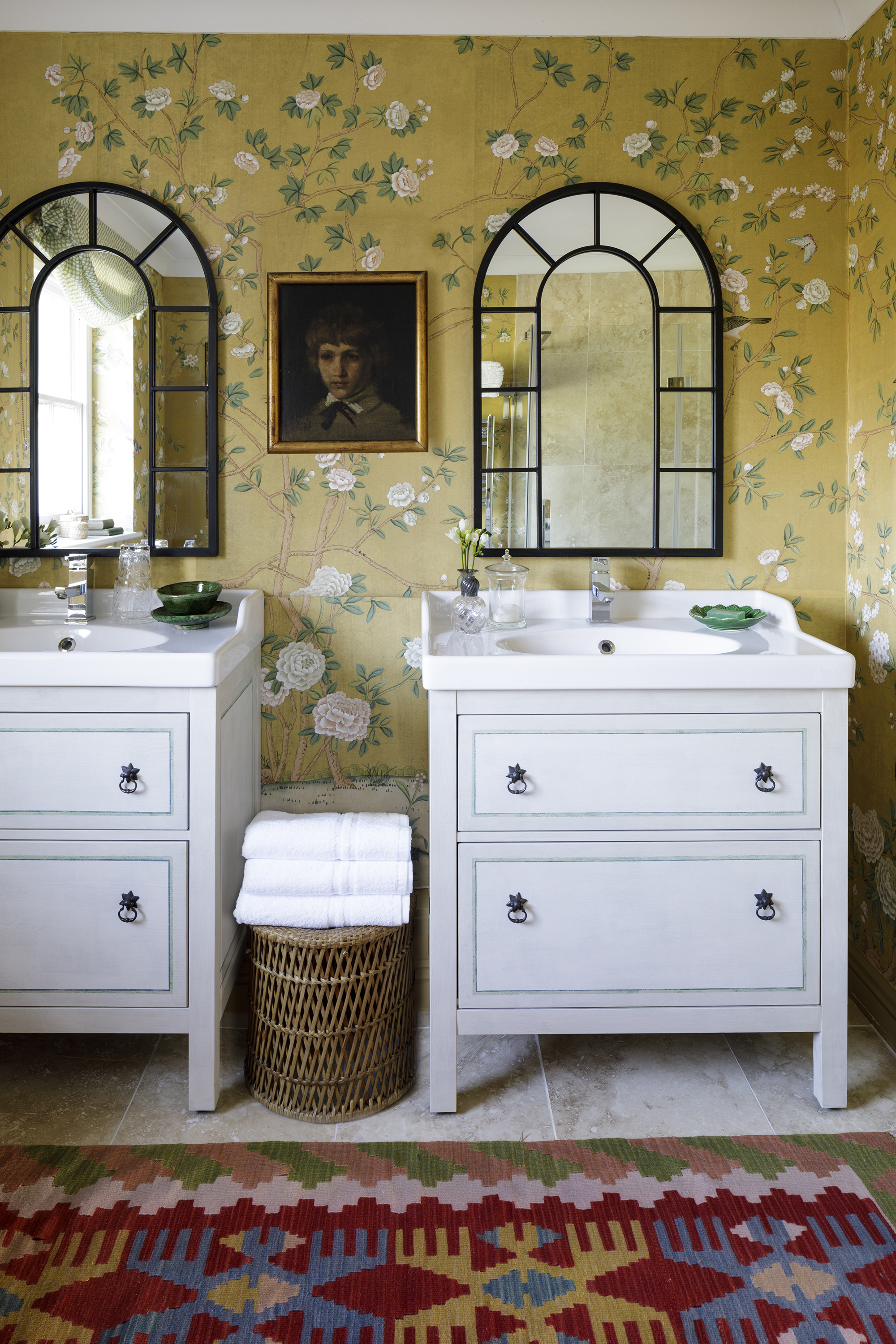
Typically, carpet is reserved for spaces like your living room, snug, and bedroom – spaces where we want to prioritize comfort and warmth above all else. But recently, designers have been reintroducing carpet into previously considered 'off-limits' spaces like bathrooms, kitchens, and boot rooms.
Using carpet in a bathroom or boot room isn’t about practicality in the traditional sense, but there are ways to make carpet in unconventional areas feel fresh, functional, and actually super cool.
If the area has low footfall and is well-ventilated, a tightly woven wool or flatweave carpet can add a surprising sense of comfort and elegance to otherwise functional, often cold spaces. If you’re going to do it, choose something low-pile, tightly constructed, and consider carpet tiles or rugs that can be replaced or spot-cleaned.
10. Choose a chic stair runner
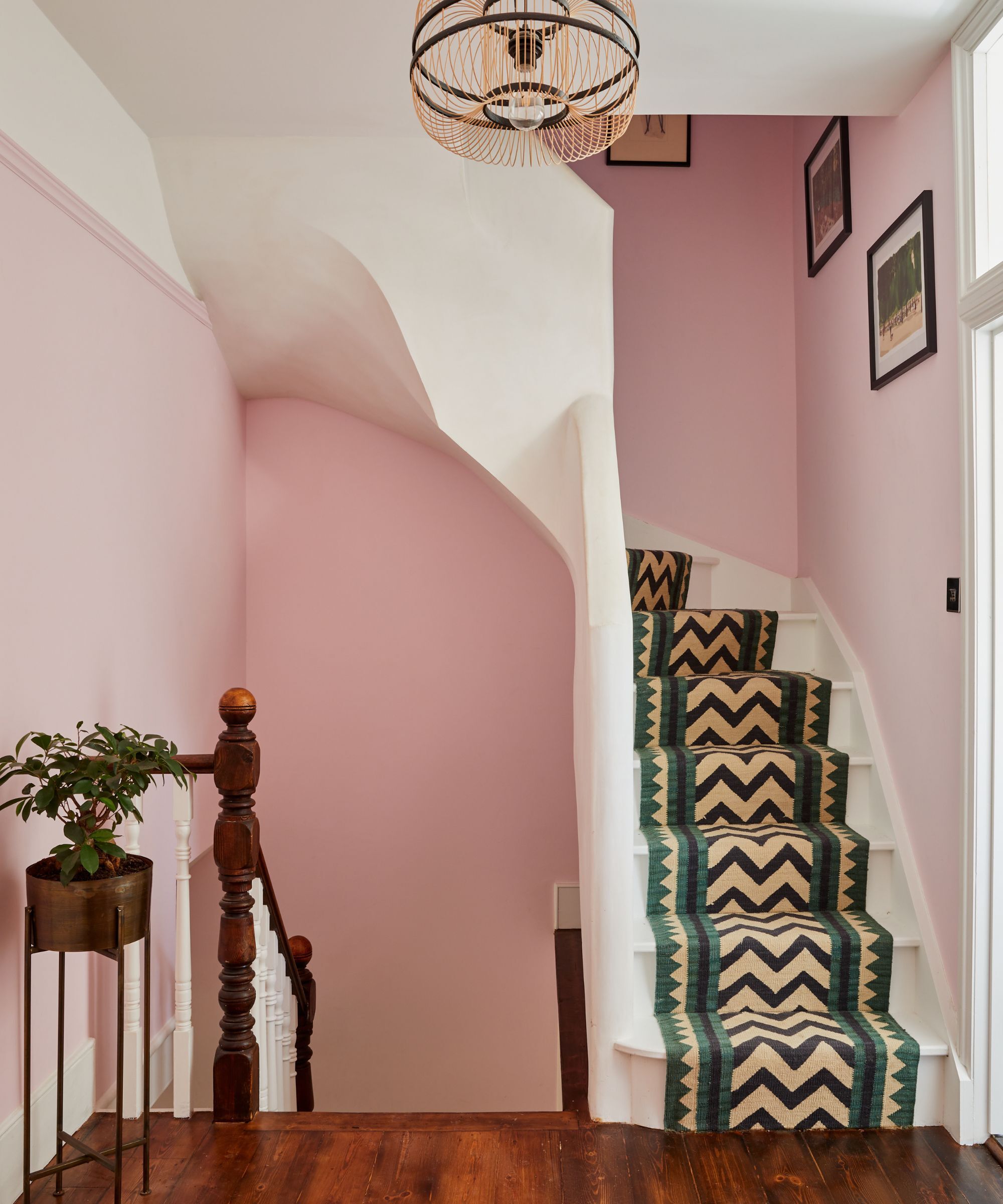
In our opinion, a staircase should be truly celebrated and decorated, rather than left as a simple connecting point from the downstairs to the upstairs in the home. From staircase wall ideas to stair runner ideas and staircase carpet ideas, there are many ways you can enhance your staircase with a patterned carpet.
'Pattern has a playfulness that is exciting to work with and can inspire color choices, making it the perfect starting point for any scheme,' says Andy Guard, Creative Director, Roger Oates Design. ‘As a transient space between rooms, a stair runner can be used to link different interior themes throughout the home.'
Alternative Flooring, Creative Director, Lorna Haigh adds, 'For stairs and hallways that get lots of traffic, a more tightly woven wool such as a boucle or Berber is preferable because it can be cleaned easily; or go for a carpet with a fleck in it, which hides a multitude of sins. Before choosing a wool carpet for stairs, either as a fully fitted carpet or as a bespoke stair runner, check the product suitability; not all wool carpets are suitable for use on stairs.'
What are the different types of carpet?
Rupert Anton of The Carpet Foundation takes us through the different types and styles of carpet.
Types of carpet:
Axminster - A patterned carpet, using up to 12 colors in the design. A traditional way of making carpet which ensures extremely good pattern definition and dimensional stability.
Wilton - The oldest method of weaving. A limited color palette, up to five colors in the design. It can, however, produce a variety of texture effects including loop pile, cut pile and cut and loop.
Tufted - By far the most popular form of carpet today and one of the most economical way of manufacturing carpet. Yarn is inserted into a backing fabric to produce cut or loop pile carpet.
Most popular types of fiber:
Wool - Wool has been used for centuries in carpet manufacturing and is still recognized as the best fiber for use in carpet. Wool is warm and soft, with very high luxury feel; it has a low propensity to soil and therefore has excellent appearance retention; it is easy to clean and maintain; it is naturally flame retardant and is environmentally friendly.
Nylon - Nylon is extremely hard wearing – and is often used in an 80% wool 20% nylon blend. Its advantages are, very high abrasion resistance, easy to clean, compatible with manufacturing processes i.e., dyeing and yarn production.
Polypropylene - This is a very highly stain-resistant fiber with very good abrasion resistance. It is typically used in twists, loop piles and Saxony products. Its advantages are, hard wearing, low propensity to soil, easy to clean, very good color fastness.
What style of carpet is the most popular?
From carpets that focus on natural, sustainable materials, to impactful patterned designs, there are a whole host of carpet styles that are proving popular in the world of interior design.
Andrew Gicquel, retail sales manager at Ulster Carpets, states, 'Plains like Ulster Velvet and our York and Grange Wilton ranges are always popular, but the latest trends are more of a push towards patterned carpet. We have had a lot of success with traditional styles that have been updated with colors to match modern styles. Overall, though, we are noticing that homeowners are looking at a carpet’s environmental credentials as much as they are color and style.'
Jess Contomichalos, stylist at Cormar Carpets, says, 'This year we have seen interior design trends start to move away from a sleek, minimalist look to create interiors that are more homely, using a range of natural elements to help us reconnect with nature. Many of our customers are now opting for a wool carpet as a great way to include a natural product that you can feel the benefits of on a daily basis. Along with providing that much-desired touch of nature, a wool carpet comes hand in hand with another popular trend – texture.'
Should carpet be lighter or darker than walls?
If you want to make a room feel cozy and intimate, going for a carpet that’s a few shades darker than your walls can help anchor the space and add warmth. This works especially well in living rooms or bedrooms where you want a comforting feel.
On the other hand, if you’re aiming for a fresh, open vibe, a lighter carpet paired with slightly darker walls can bounce light around and make the room feel more spacious.
In regard to having carpet lighter or darker than walls, Contomichalos says, 'This is totally down to personal preference, there is no right or wrong answer as it is dependent on your interior style and requirements. Using a lighter-toned carpet can really freshen up a room and create a harmonious feel, whereas using bolder tones can add drama and interest. Some of our most popular carpets range from warming beiges to dramatic stormy grays to suit the needs of today’s homeowners.'
What is the easiest carpet to take care of?
Wool is often considered the easiest carpet to take care of due to its durability and natural resistance to heat, dirt, and stains.
Andrew Gicquel says 'when it comes to a natural product that is easy to clean, wool is the perfect solution. Wool is a natural stain repellent and is easy to maintain with simple, regular maintenance.'
Contomichalos also states, 'Many homeowners with a family or pets tend to opt for our easy clean ranges, which are made from polypropylene, they are stain resistant and bleach cleanable meaning they can be laid anywhere in the home without the worry of everyday spills and stains.
However, although a man-made carpet seems like a more obvious choice when it comes to busy households, wool cannot be discounted, as many consumers look to bring a more sustainable element into their homes, a wool carpet is a great choice. Wool is a fantastic natural fiber that comes with a host of benefits and a big one is its resistance to dirt. This results in less time and money being spent on cleaning products, meaning that with regular vacuum cleaning, your carpet will look good for many years to come.'
See our guide on how to deep clean a carpet for some handy carpet cleaning tips.

Zara joined Homes & Gardens in February 2022 as a Content Editor. After studying English Literature at University, she worked as an Ecommerce Website Editor, Content Writer and Buying Intern at multiple independent businesses within the luxury retail and lifestyle sectors. Her role at Homes & Gardens unites her love, experience and passion for the world of design and desire to create inspiring written content. She enjoys nothing more than discovering new trends, brands and products, whether that be in fashion, interior design or lifestyle.
- Charlotte OlbyStyle & Trends Editor